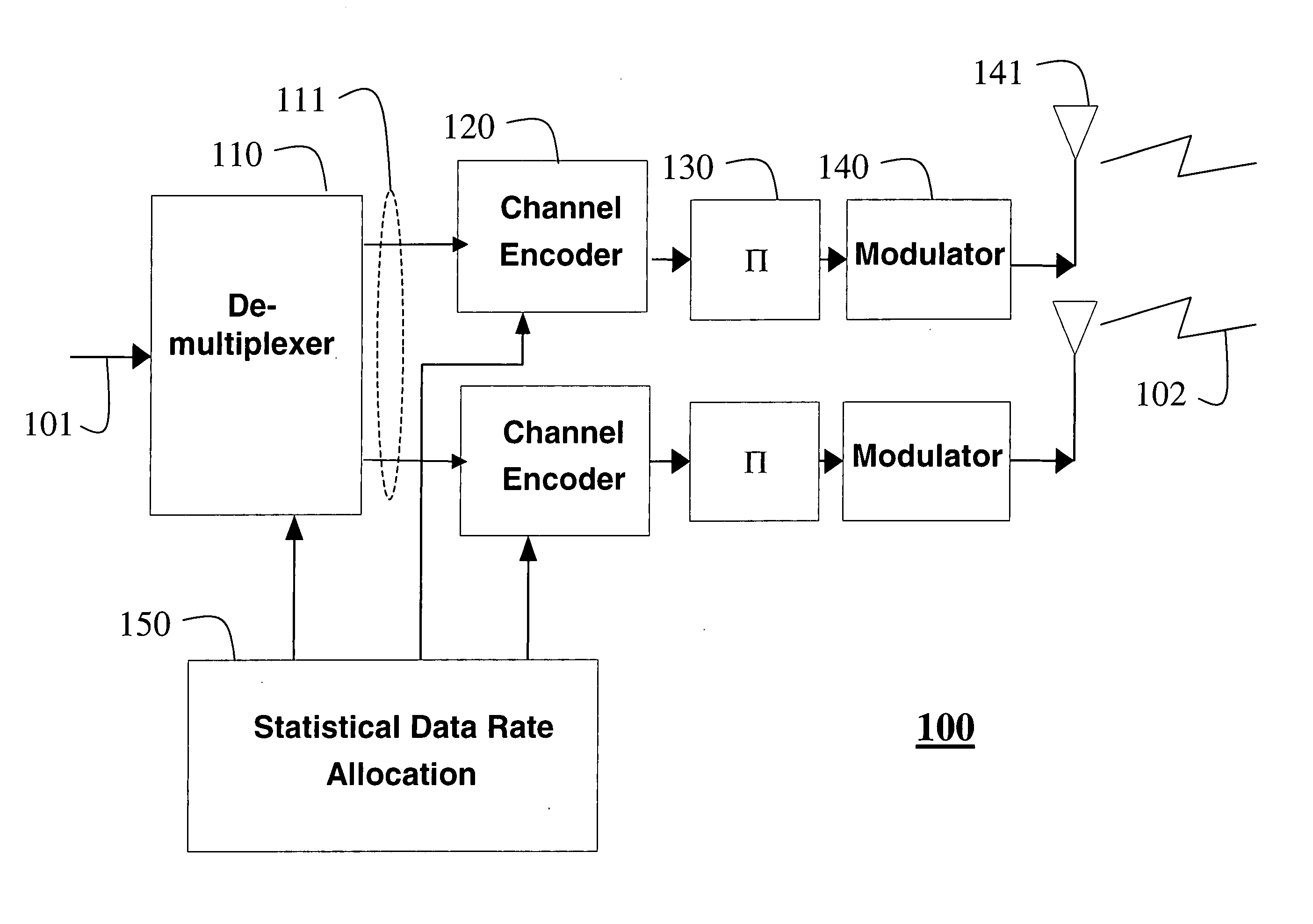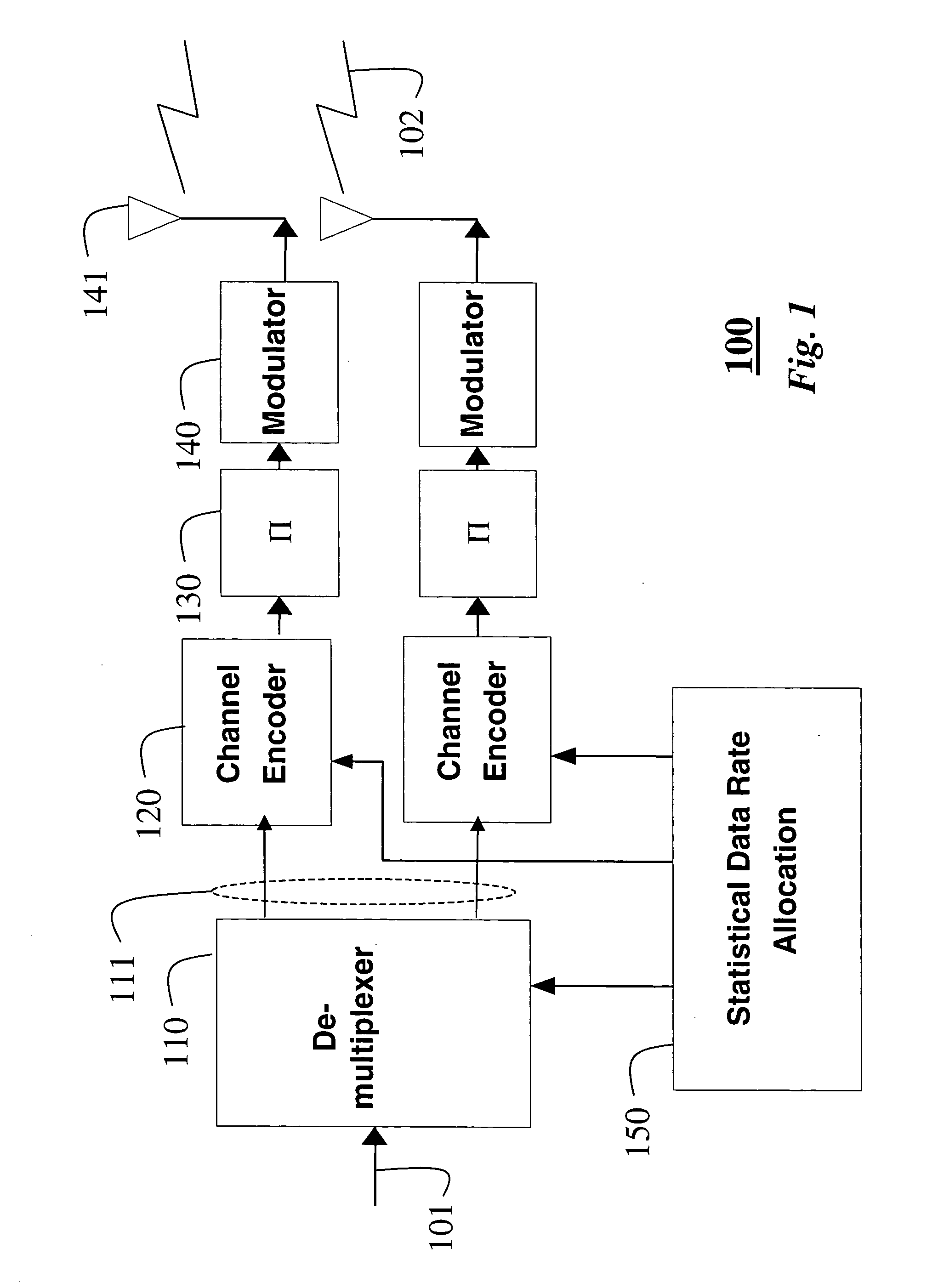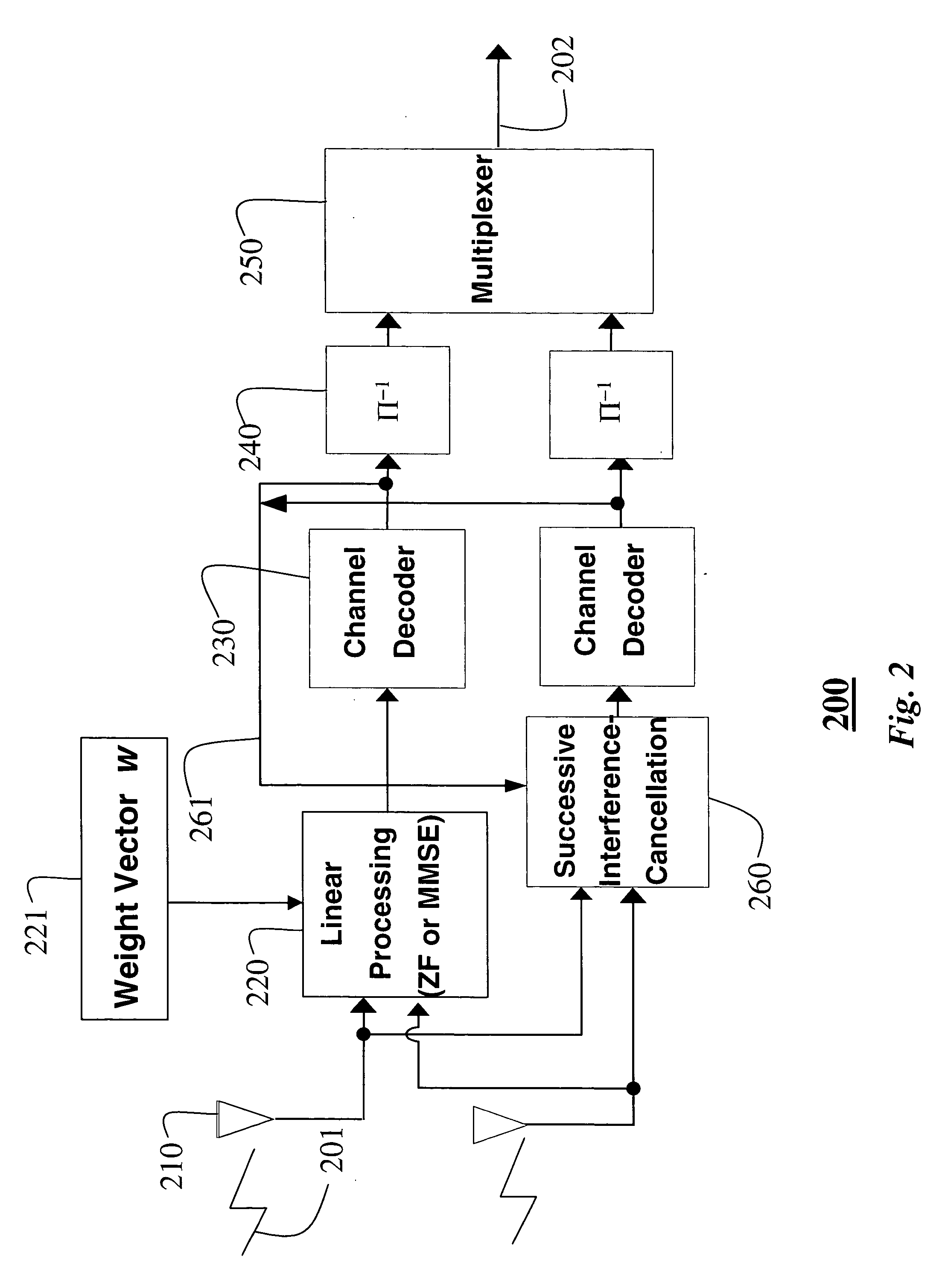Statistical data rate allocation for MIMO systems
a technology of statistic data and mimo, applied in data switching networks, multiplex communication, digital transmission, etc., can solve the problems of increasing the complexity, overhead and cost of the system, affecting the quality of the data, and the layer detection first, so as to achieve the effect of reducing the data rate and reducing the quality channel
- Summary
- Abstract
- Description
- Claims
- Application Information
AI Technical Summary
Benefits of technology
Problems solved by technology
Method used
Image
Examples
Embodiment Construction
[0015] Transmitter Structure
[0016]FIG. 1 shows a transmitter 100 for a layered MIMO system according to the invention. An input data stream 101 is demultiplexed 110 to Nt substreams or ‘layers’111. Each layer is encoded 120 independently. The encoded layers are interleaved (Π) 130 and modulated 140 and sent concurrently to different transmit antennas 141 to be transmitted as transmit signals 102 through a channel. In the example shown, Nt=2, although it should be understood that any practical number of transmit and receive antennas can be used with the invention.
[0017] The demultiplexing 110 and encoding 120, according to the invention, use a statistical rate allocation 150 as described herein. The statistics are based on past observations of the layer capacities, as opposed to instantaneous feedback.
[0018] Receiver Structure
[0019]FIG. 2 shows a receiver 200 in the layered MIMO system according to the invention. Signals 201 are received by Nr receive antennas 210. Linear process...
PUM
 Login to View More
Login to View More Abstract
Description
Claims
Application Information
 Login to View More
Login to View More - R&D
- Intellectual Property
- Life Sciences
- Materials
- Tech Scout
- Unparalleled Data Quality
- Higher Quality Content
- 60% Fewer Hallucinations
Browse by: Latest US Patents, China's latest patents, Technical Efficacy Thesaurus, Application Domain, Technology Topic, Popular Technical Reports.
© 2025 PatSnap. All rights reserved.Legal|Privacy policy|Modern Slavery Act Transparency Statement|Sitemap|About US| Contact US: help@patsnap.com



